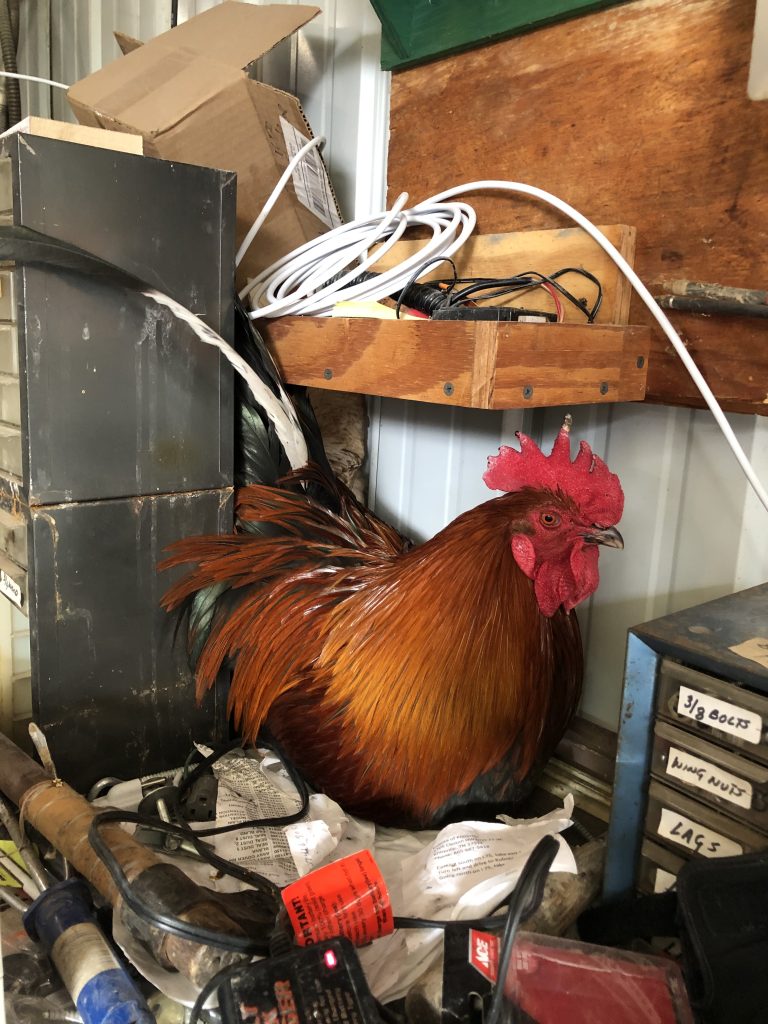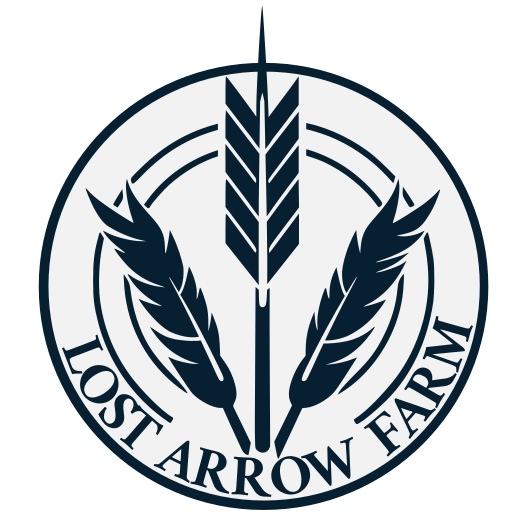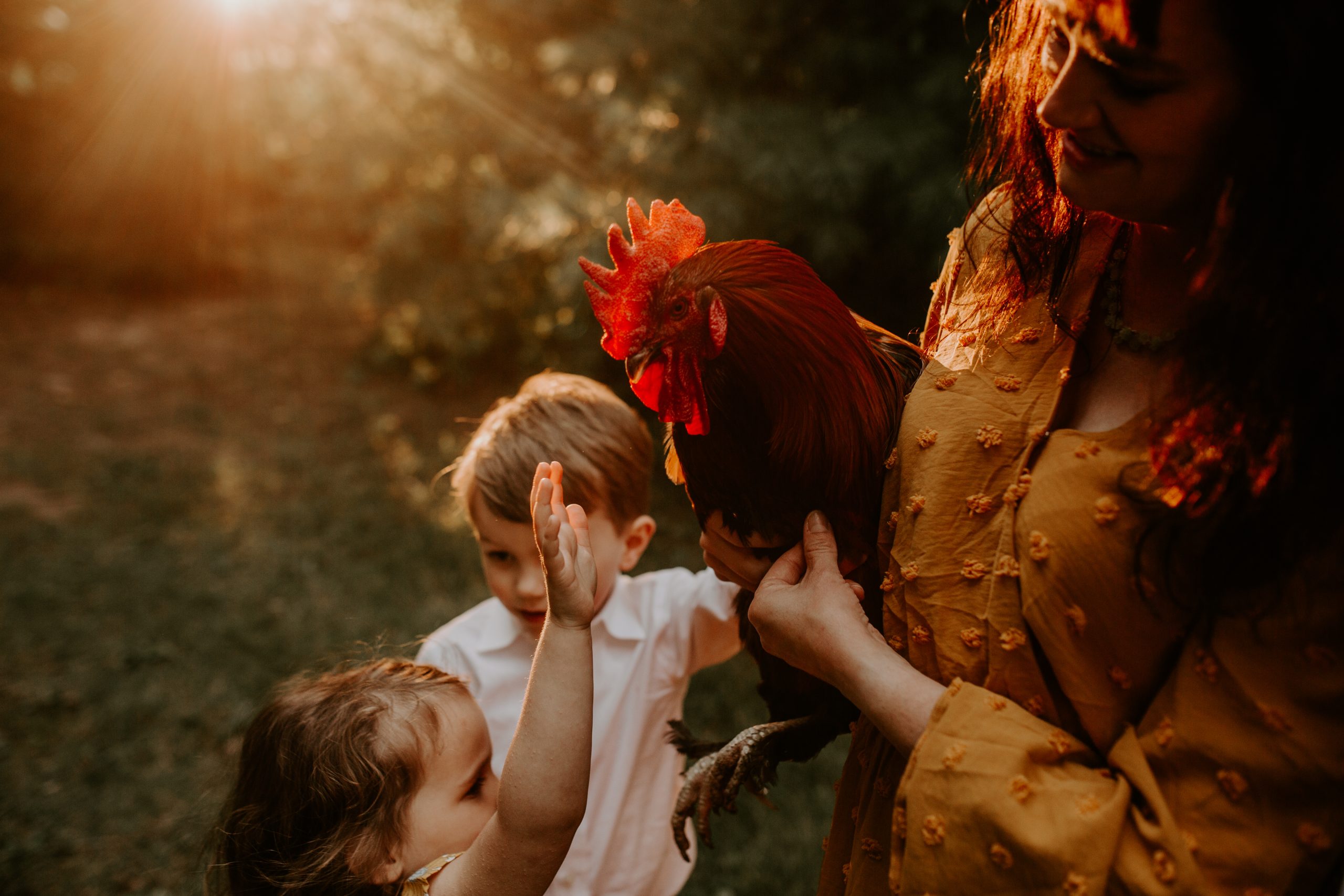If you were to ask several different chicken keepers if a rooster’s spurs should be removed, you would get a range of answers from them. Let’s first touch on why they have them in the first place.
Most roosters (and some hens!) have spurs. They look like a large conical toenail coming out of the inner part of their ankle, and they serve a very important purpose. As I touched on in the blog about my rooster, Cluckles, they devote their lives to caring for and protecting the hens. The spurs are very sharp and an effective weapon against anything that may threaten their flock.

While these spurs can offer necessary protection, there are several reasons why some chicken keepers find they need to address them. In my experience, the most common reason is that the rooster is aggressive towards humans or other chickens in the flock. Though I haven’t personally experienced this, I’ve seen some pretty gruesome pictures of people who have taken a rooster spur to the leg – which aside from the initial injury can also cause secondary infections.
There is also the possibility of injury to the hens during mating, which can be especially challenging with a large rooster and a much smaller hen, or one that is overly amorous. I’ll cover it more in depth in another blog, but roosters will mate with hens several times per day year round, so this issue can’t be avoided simply by separating during a particular time of year.
So should the spurs be removed entirely?
If there is an avian vet near you that is willing to perform the surgery and provide the appropriate pain medication during recovery, that may be an option. However, many people find that there are not vets near them that accept chickens or if there are, they are prohibitively expensive.
There are home methods to remove the spurs that I am not going to detail here. The reasoning is that removing the spurs at home is incredibly painful for roosters. Underneath the hard outer spur, there is a very sensitive ‘quick’ inside. When the spur is removed, it leaves the quick exposed; a human equivalent of this would be if your fingernail were to be ripped off, the exposed nail bed underneath would be incredibly painful.
So why are people frequently saying that their rooster doesn’t even act like it bothers them when they’re removed?
Chickens are prey animals, and like many prey animals, one of their main defenses is to not show any sign of weakness. This is also why you will often not know a chicken is ill until it is too advanced to help them.
So, as a natural instinct, they will hide whenever they are in pain – including while their nail is being removed with no anesthetic or pain medication.
There are alternatives to removing the spur altogether:
- If the rooster is too rough on the hens, one option is to get a chicken saddle. There are a lot of varieties and patterns to choose from online but it’s basically a piece of fabric that covers the hen’s back to help protect her from aggressive or too frequent mating.
- The spurs can be ground down a bit by use of a dremel tool. This will make them less sharp, but will still leave them with a means of defense if needed.
- I use pliers style nail clippers (mine are made for dogs) to trim the ends of my rooster’s spurs when they start getting too long. I advise against the guillotine style clippers because they can cause more incidence of splitting the spur.
- A more novel option are to try clear nail caps (intended for large dogs). These caps come with a special glue that binds them to the nail. You can get them in a variety of colors, but since chickens will bully/peck at a chicken that appears different, I advise to get clear or muted colors – it’s especially important to avoid RED because it looks like blood. Chickens will peck another chicken (sometimes to death) if they see blood or an injury on them.
As an important note for working on any chicken’s nails, it is helpful to have a second person to help you. Chickens relax when their eyes are covered so someone can gently hold a cloth over their eyes – taking care to not block their nostrils, while the other person tends to the spurs. It is VERY important to never position a chicken on its back; this will cause their lungs to compress and they will have great difficulty breathing.
There are a lot of options out there for managing a rooster’s spurs, it’s important that you find what works for your homestead. Happy chicken tending!

